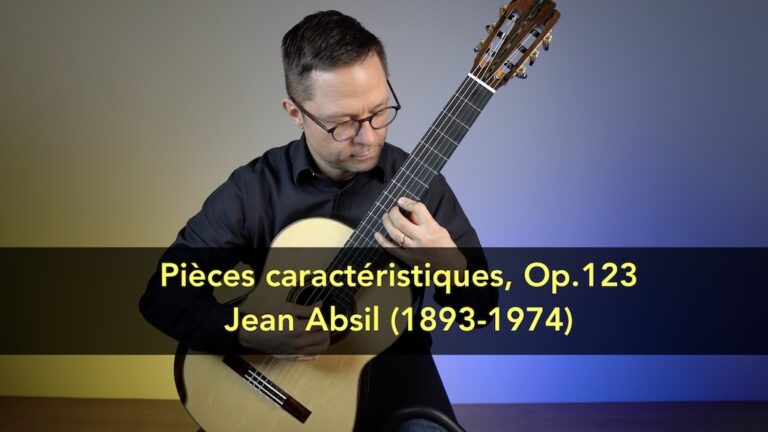A lesson on five benefits of practicing arpeggios and other textures on single strings for the right hand in classical guitar. The benefits range from increased accuracy, economic or efficient movements, tone control in each finger, rhythmic evenness, multilayered muscle memory awareness, and tremolo.
All the examples are from my technique book but feel free to use any of your own exercises or repertoire to accomplish the task. Here’s the YouTube link if you want to watch it there.
Video Times and Benefits
- 00:00 Intro
- 1:45 – Accuracy and economic or efficient movements
- 3:50 – Tone and volume control
- 6:13 – Rhythmic Evenness
- 7:35 – Multilayered muscle memory awareness
- 9:36 – Tremolo
- 10:32 – Final Advice and Conclusion
Benefits
Accuracy and economic or efficient movements – Small confined moments on a single string are good practice in general but also require you to be precise or you’ll accidentally hit another string. Converting exercises such as Giuliani patterns or arpeggios to a single string can really help with accuracy and your overall awareness of finger movement. Using the 2nd string is great because there will be strings on both sides of it which makes it more of a precision exercise than the 1st string.
Tone control in each finger – Playing on a single string allows you to test and compare the tone quality and volume of the different fingers. This is an excellent opportunity to even out your sound and dynamics making sure each finger is in control of the sound.
Rhythmic Evenness – It’s much easier to hear rhythmic inaccuracy when all the notes are the same.
Multilayered muscle memory awareness – This is fancy talk for ‘play it in multiple ways’. Practicing your arpeggios or other textures in a new way can embed a new layers of muscle memory and possibly also teach you about your technique and muscle movements as well. Practicing in the same way doesn’t always help you improve quickly or securely. Having secondary layers of muscle memory is a solid way to expand and solidify a technique.
Tremolo – Many students can play arpeggios well and if they can transfer that motion to a single string can allow the student to realize that they can actually play tremolo if they equate it to a similar technique.
Try it out and leave your comments below. You might be surprised how difficult it is at first which is a good sign that it is something to work on.





Great lesson. I have been using “The Bible of Classical Guitar Technique” by Hubert
Kappel for arpeggios.
It’s a great book!